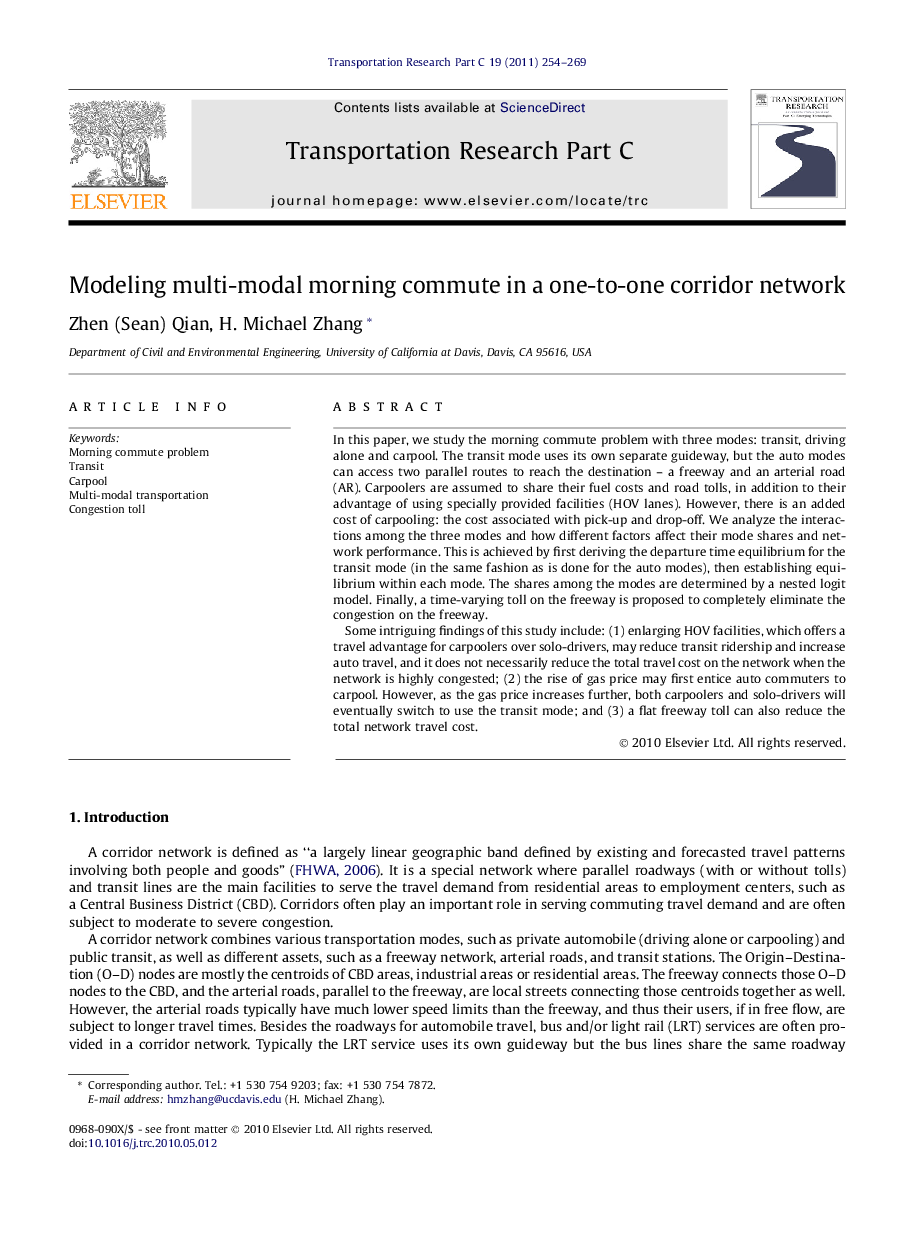| Article ID | Journal | Published Year | Pages | File Type |
|---|---|---|---|---|
| 525321 | Transportation Research Part C: Emerging Technologies | 2011 | 16 Pages |
In this paper, we study the morning commute problem with three modes: transit, driving alone and carpool. The transit mode uses its own separate guideway, but the auto modes can access two parallel routes to reach the destination – a freeway and an arterial road (AR). Carpoolers are assumed to share their fuel costs and road tolls, in addition to their advantage of using specially provided facilities (HOV lanes). However, there is an added cost of carpooling: the cost associated with pick-up and drop-off. We analyze the interactions among the three modes and how different factors affect their mode shares and network performance. This is achieved by first deriving the departure time equilibrium for the transit mode (in the same fashion as is done for the auto modes), then establishing equilibrium within each mode. The shares among the modes are determined by a nested logit model. Finally, a time-varying toll on the freeway is proposed to completely eliminate the congestion on the freeway.Some intriguing findings of this study include: (1) enlarging HOV facilities, which offers a travel advantage for carpoolers over solo-drivers, may reduce transit ridership and increase auto travel, and it does not necessarily reduce the total travel cost on the network when the network is highly congested; (2) the rise of gas price may first entice auto commuters to carpool. However, as the gas price increases further, both carpoolers and solo-drivers will eventually switch to use the transit mode; and (3) a flat freeway toll can also reduce the total network travel cost.
